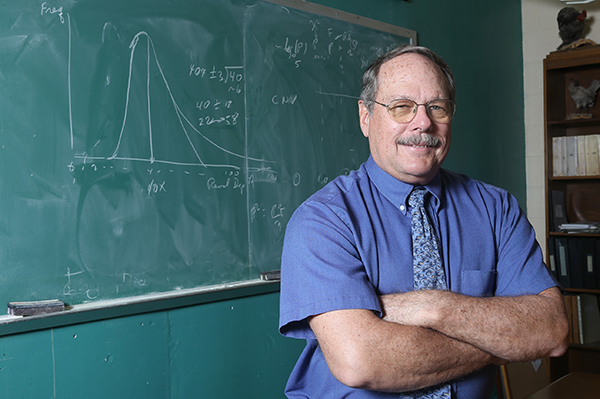September 30, 2016
Harnessing the power and potential of GMOs: Purdue geneticist weighs in
 Purdue University professor of animal sciences William Muir will discuss safeguards to prevent the misuse of genetic modification technology in a presentation at the Dawn or Doom Conference, Oct. 4 at Purdue University. (Purdue Agricultural Communication photo/Tom Campbell)
Download image
Purdue University professor of animal sciences William Muir will discuss safeguards to prevent the misuse of genetic modification technology in a presentation at the Dawn or Doom Conference, Oct. 4 at Purdue University. (Purdue Agricultural Communication photo/Tom Campbell)
Download image
WEST LAFAYETTE, Ind. - Purdue University professor of animal sciences William Muir recognizes the potentially immense benefits of genetic modification technology, commonly known as genetic engineering or gene editing.
“It could cure or prevent cancer, increase food production to feed a rapidly expanding global population, alleviate pain and suffering among livestock animals and prevent the spread of mosquito-borne diseases such as Zika or malaria,” says Muir, a biotechnology specialist.
Still, he understands why some people are uncomfortable with the thought of manipulating the building blocks of life to create genetically modified organisms, or GMOs, and shares some of their concerns.
“While it’s important to keep in mind all of the wonderful things we can do, we need to be cognizant of what the risks are and make sure we have the appropriate safeguards in place,” he says. “This is a tremendously powerful technology, and it is absolutely vital that we make sure it is used responsibly.”
Muir will discuss ways to reduce the risks of genetic modification in his lecture “The Science and Science Fiction of GMOs: With Great Power Comes Great Responsibility” during a Purdue conference called Dawn or Doom 2016: The Risks and Rewards of the New Technology Explosion. The conference, to be held Monday and Tuesday (Oct. 3 and 4) on Purdue’s West Lafayette campus, is free and open to the public.

Muir's talk will be 2:15 to 3:15 p.m., Oct. 4, in Room 206 of the Stewart Center.
Since genetic modification technology was first widely adopted 20 years ago, the scientific community has been aware of the potential for accidents or intentional misuse, Muir said.
“As we are developing new and more powerful tools, we really need to reevaluate where we are. We certainly don’t want to fear monger, but we also cannot afford to be complacent.”
Muir said his Dawn or Doom lecture would focus on the need for tighter safeguards to minimize the risk of accidental misuse. He will recommend regular environmental sampling as a precaution to detect accidental or intentional release.
“We know what gene drive technology looks like,” he said. “It does not occur naturally and is easy to detect using a new technology called metagenomics, which is a process for environmental sampling and sequencing to determine the genetic structure of a sample.”
Muir noted that unlike nuclear technology, which requires great expertise, equipment and time to develop, gene editing technology can easily be done using premade constructs from mail-order companies.
“Pandora’s box has already been opened,” he said. “The question is now how we will regulate and control the power it offers.”
Writer: Darrin Pack, 765-494-8415, dpack@purdue.edu
Source: William Muir, 765-494-8032, bmuir@purdue.edu
Agricultural Communications: (765) 494-8415;
Darrin Pack, dpack@purdue.edu
Agriculture News Page

